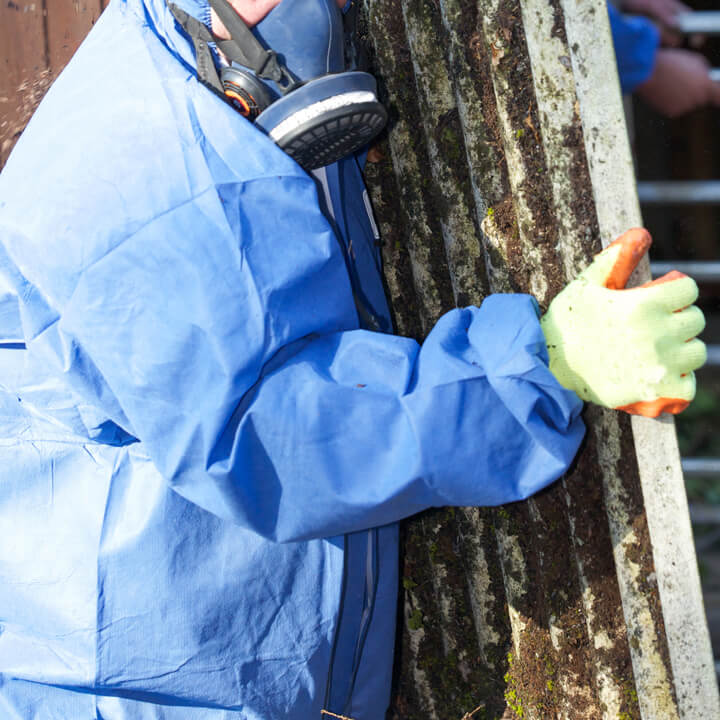Who is responsible for asbestos in non-domestic premises?
5th October 2017
What is asbestos?
Asbestos is the name given to a group of fibrous materials that have historically been used in a wide range of building materials as a result of the protection that they can provide against heat, fire and sound. However, asbestos is now recognised as one of the most significant health hazards in the world, reportedly still killing around 5000 workers each year.
Control of Asbestos Regulations 2012
The Control of Asbestos Regulations (CAR 2012) were implemented to take account of the EU Commission’s view that the UK was not fully compliant with the relevant EU directive. CAR 2012 cover a wide range of areas, including who is responsible for controlling asbestos and what they must do to comply. CAR 2012 regulation 4(3) imposes a duty on every ‘dutyholder’ to:
- Determine whether asbestos is present in a building or is likely to be present; and
- Manage any asbestos that is or is likely to be present.
Regulation 4(1) defines a ‘dutyholder’ as ‘every person who has an obligation of any extent in relation to the maintenance or repair of non-domestic premises or any means of access or egress to or from those premises’. This is a very broad definition and means that a variety of individuals could be liable including owners, landlords and tenants of non-domestic properties.
So, is the landlord or the tenant the dutyholder?
In most leases for non-domestic premises the landlord passes primary responsibility for maintenance and repair to the tenant through various clauses within the lease. In such cases the tenant would generally be the dutyholder for the premises for the purposes of CAR 2012.
However, whilst the landlord may have passed primary responsibility for maintenance and repair to the tenant, the landlord usually retains an obligation to maintain and repair common parts or the external parts/structure. In those circumstances, the landlord will also be a dutyholder. Regulation 4(1) CAR 2012 states that where there is more than one dutyholder ‘the relative contributions to be made by each in complying with the regulation 4 duties are determined by the ‘nature and extent of the maintenance and repair obligation’ owed by each dutyholder’.
In short, each party’s liability under CAR 2012 depends on their respective lease obligations to maintain and repair.
Practically, where the lease imposes maintenance and repair obligations on the tenant, the landlord should ensure that the tenant is aware of its potential liability under CAR 2012 and be satisfied that the tenant has complied with its obligations.
Where the property is a multi-let premises and the responsibility for maintenance of the common parts, services, external fabric and main structure lies with the landlord, it will be the sole dutyholder in respect of those areas and will need to fully comply with CAR 2012. However, the landlord may be able to recover its costs of compliance from the tenants via the service charge.
Tenant default and forfeiture
Landlords should be aware that, as the definition of dutyholder is so wide, where primary responsibility has been passed to a tenant but the tenant defaults on any of its duties under CAR 2012, the landlord will need to step in and carry out any necessary works. The inclusion in a lease of a general obligation on the tenant to comply with the statute clause also means that, whilst the landlord may continue to be a dutyholder and may still need to step in and carry out works, the landlord will be able to claim damages from the tenant. Damages can include the costs of carrying out any necessary works, and potentially any other loss the landlord incurs as a result of the tenant’s default.
It is also important to note that, where a lease is forfeited or surrendered, or upon any lease expiry, the landlord will immediately become the primary dutyholder.
Consequences of non-compliance with CAR 2012
As well as potential civil liability [1], failure to comply with CAR 2012 constitutes a criminal offence, for which the penalty for each offence can be a prison sentence of up to 2 years and/or an unlimited fine and CAR 2012 are enforced strictly by the Health and Safety Executive (HSE). In 2011 Marks and Spencer were fined £1 million for offences relating to asbestos in two of its stores. Whilst this doesn’t relate to a landlord/tenant situation (but rather an employer/employee situation), it shows the level of fines the HSE is willing to impose.
WM Comment
It will almost always be the case that both the landlord and the tenant of non-domestic premises will be dutyholders for the purposes of CAR 2012. It is therefore essential for parties to consider their respective contributions to maintenance, repair and general compliance with laws when entering into a lease. The Walker Morris transactional Real Estate team has a great deal of experience and can assist you in negotiating and drafting a lease that is appropriate for you (whether as a landlord or a tenant) under CAR 2012, as well as advising on any existing leasehold duties.
____________________
[1] Those affected by a dutyholder’s failure to comply with CAR 2012 may bring a civil suit in negligence (section 69 of the Enterprise and Regulatory Reform Act 2013).


